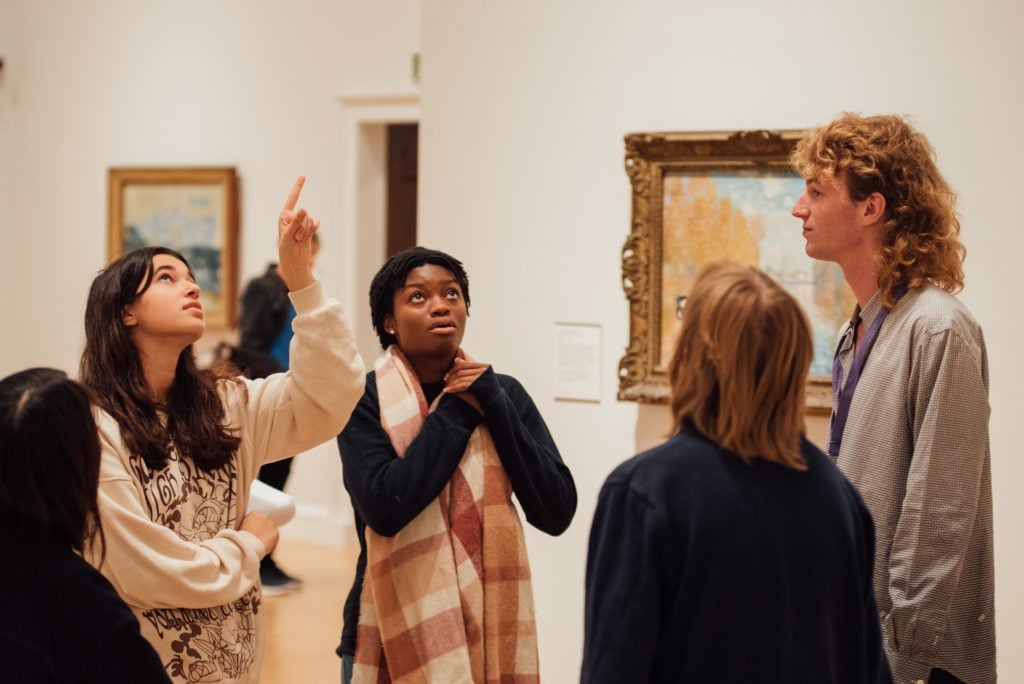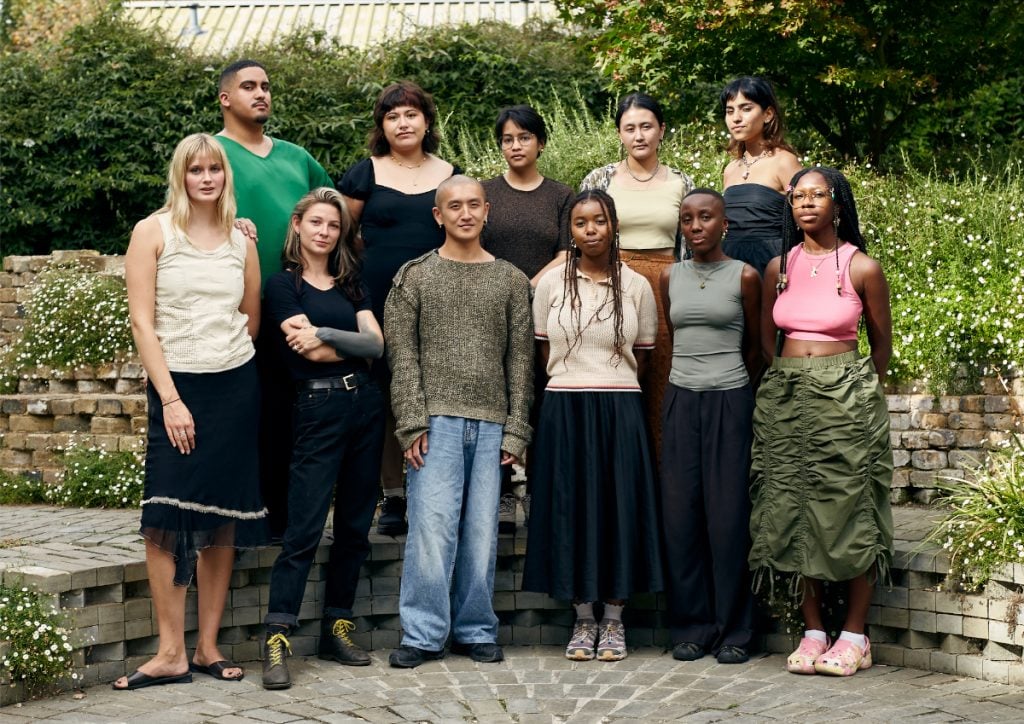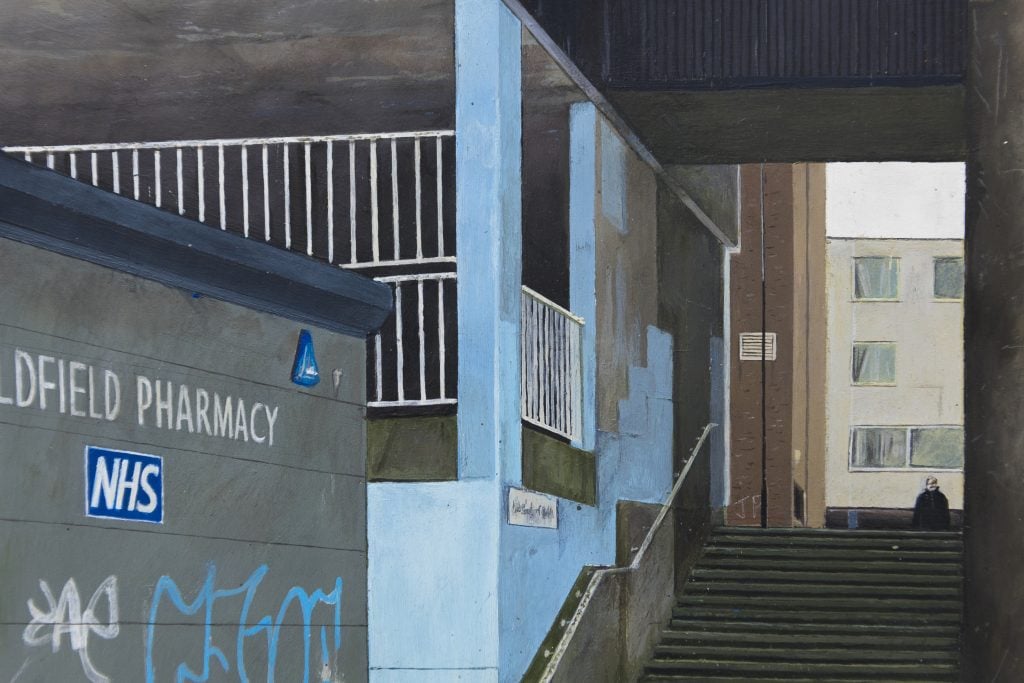Art World
The U.K. Art World Is More Elite Now Than It Was 60 Years Ago. Can It Reverse Course?
Several new initiatives for arts professionals are hoping to tackle the U.K.'s deeply entrenched class problem.

Several new initiatives for arts professionals are hoping to tackle the U.K.'s deeply entrenched class problem.

Jo Lawson-Tancred

“I felt like there were no people like me in the sector,” said Michelle McGrath, who has spent over a decade working at organizations including the British Museum and Royal Museums Greenwich. “Obviously there are financial barriers,” she said—but she also noted a myriad of ways to feel out of place as someone working class, especially in the U.K. where class is still deeply entrenched and measured by many more metrics than income. “People assume shared experiences. They assume you went on holiday as a child when, no, I didn’t.”
McGrath craved her own community. So, in 2018, she founded the support network Museum As Muck—a play on the derogatory British term “common as muck” to refer to working class people. It was one of the very first initiatives with the explicit aim of supporting museum workers from a lower socio-economic background and it now boasts over 700 members and a program of social events and professional training opportunities, as well as education workshops and hiring consultations for external organizations.
In recent years, McGrath’s voice has become one of many. “This industry has the potential to feel isolating if you don’t feel you have certain connections, a particular accent, or educational background,” agreed Meg Molloy, head of communications at Stephen Friedman Gallery. Last month, she launched the Working Arts Club, a similar network for arts professionals.
The art world may pay lip service to the benefits of improving representation of historically marginalized groups, but the sector has also been grappling with successive public funding cuts and, more recently, a wobbly market. Salaries and job security have both suffered as a result, making the industry less attractive to those without an existing financial safety net. A study from 2022 found that the number of U.K. creative workers born between 1953 and 1962 who identify as working class was 16 percent. That number had fallen to just 8 percent for today’s younger generation of professionals, who were born four decades later.
A new wave of initiatives have been set up to combat elitism in the art world. Can they bring about much-needed change?

Launch party of Working Arts Club in London, July 2024. Photo: David Owens.
A considerable buzz surrounded the Working Arts Club’s launch party in July and, so far, nearly 600 people have subscribed to the mailing list. An early indication of the club’s ambition is a panel taking place later this month at Christie’s that will feature high-profile gallerists and auction specialists who identify as working class, like Ell Pennick, founder of Guts Gallery, and Michelle McMullan, a director at Christie’s.
Through events like these, Molloy said that the club hopes to improve “the visibility of working class professionals,” as well as provide spaces for professional networking of the kind too often reserved for those who are already well-connected. Undergirding these more practical aims, however, is the desire for greater camaraderie. “It’s important to feel comfortable enough to talk about what you’re interested in and experiences you can relate to,” said Molloy. “So one of our main aims is simply to bring people together.”
Another recently launched program that aims to offer a crucial first foot in the door is New Curators, a 12-month training program specifically aimed towards aspiring curators from lower socio-economic backgrounds. Its first annual cohort of 11 fellows, including applicants from Cuba, Ghana, India, and Slovakia, was announced last fall and has already collaborated on the first U.K. institutional show of Dominican American artist Firelei Báez at South London Gallery (through September 8).

Inaugural 2023-24 cohort of New Curators training scheme. Courtesy: New Curators.
The program’s co-founding director Kerryn Greenberg, who spent over a decade working as a curator at Tate, described feeling “deeply frustrated by the lack of diversity within curatorial departments.” A scant few training opportunities, such as internships at museums, were usually unstructured and took place in an overly stressful environment. “The individual’s experience very much depended on when they arrived, how long they stayed, how stretched the person they were working with was, and so on,” she explained.
Graduates of art history or curatorial degrees usually have a strong academic foundation but little practical experience, which can be hard to obtain without connections. Therefore, the scheme focuses on networking opportunities at partner institutions and developing skills like the writing of funding applications or wall texts, budgeting, and public speaking.
One problem that is particularly complicated for the art world to address proactively is the deterioration of the next generation’s access to art history, a subject almost exclusively taught at private schools in the U.K. The A-Level qualification was very nearly axed in 2016 and interest has plummeted. Between 2010 and 2020, the number of students who are U.K residents choosing art history fell by 28.5 percent, according to the U.K.’s Higher Education Statistics Agency (HESA).
A new campaign Art History Now, by the charity U.K. Association for Art History, has invited renowned figures in the art world to share why they fell in love with the subject, underscoring its importance to society. It quotes the artist Sonia Boyce, recalling a lecture on contemporary feminist art she attended in 1979: “the revelation that art could connect directly with everyday life has never left me.” She has been vocal in her support of improving access to the arts.

AHLU students at The Courtauld. Photo: Ed Hands, courtesy of AHLU and The Courtauld.
“Art history is woven into everything I make,” enthuses artist and broadcaster Grayson Perry, who has often spoken about his working class roots. “Art shows us how humans felt at any one time or place, not necessarily in a reflective conscious way like in literature but in an unconscious or bodily way. The artists of the past talk directly to us today without the barrier of language.”
Another charity, Art History Link-Up, is hoping to boost uptake of the subject at an earlier stage of education via its free “Art History For Everyone” course for state school students. The Courtauld in London, which constitutes a world class museum as well as a college of the University of London specializing in art history, will offer online and in-person high school classes on Saturdays. Meanwhile, younger students local to Waddesdon Manor in Buckinghamshire, home of the Rothschild Collection, can access free courses during the summer holidays.
Another problem that compounds issues of access in the U.K. is the tendency to hoard cultural treasures, public spending, and job opportunities in London, the most expensive city. In recent years, the U.K. government has made efforts to redistribute funding towards regional institutions, but some smaller galleries are also taking matters into their own hands.
Pipeline, nestled on the fringes of Mayfair, the very heartland of London’s commercial gallery scene, recently initiated an exchange with Slugtown, a non-profit, artist-run space in Newcastle, northern England. There, Pipeline presented work by Conor Rogers, whose site-specific installation Renegade responded directly to the local Shieldfield council estate where the gallery is located as part of a broader exploration of working class identity. In turn, Slugtown brought to London a two-person exhibition of works by artists Hilda Kortei and Rachel Adams.

Conor Rogers, Renegade (2024). Photo: Matt Denham.
The aim of the exchange, according to Pipeline founder Tatiana Cheneviere, was “to create a more collegial art community within the U.K.,” to shift the focus away from London, and “to promote the same infrastructure elsewhere.” She plans to arrange more exchanges with different venues in the future.
“We’re passionate that we don’t want art to solely be a pursuit for those who can afford it,” said Slugtown’s co-director Matt Antoniak. “A lot of artists are being priced out of London but the attention is still heavily London-focused and that can risk becoming a monoculture.”
As Antoniak alludes to, better equipping institutions to support up-and-coming artists from lower socio-economic backgrounds is one factor that might ensure a broader cultural offering. In 2020, researcher Beth Hughes launched the Working Class British Art Network to document the ways in which artists work within a specifically working class tradition or aesthetic. At a conference at the Whitworth Art Gallery in Manchester next month, “Stretching the Canon,” five artists and six academics will present findings on the topic.
“There is a stigma that gets attached to working class life,” said Hughes. “That it’s not cultured, not sophisticated.” Critically elevating an artist’s practice can help counter this narrative. “We need to build that discourse around it, to really embed it.”
She is hopeful that more is slowly being done to support working class artists and art professionals alike. Arts Council England’s increased scrutiny of the socio-economic diversity of both the audiences and workforces for publicly funded arts organizations is one promising measure since—especially these days, “money talks.”
“There’s been small progress around getting class on the agenda,” added Hughes. “Until its backed up by major organizations making it a priority, I don’t think we’ll see seismic change.”